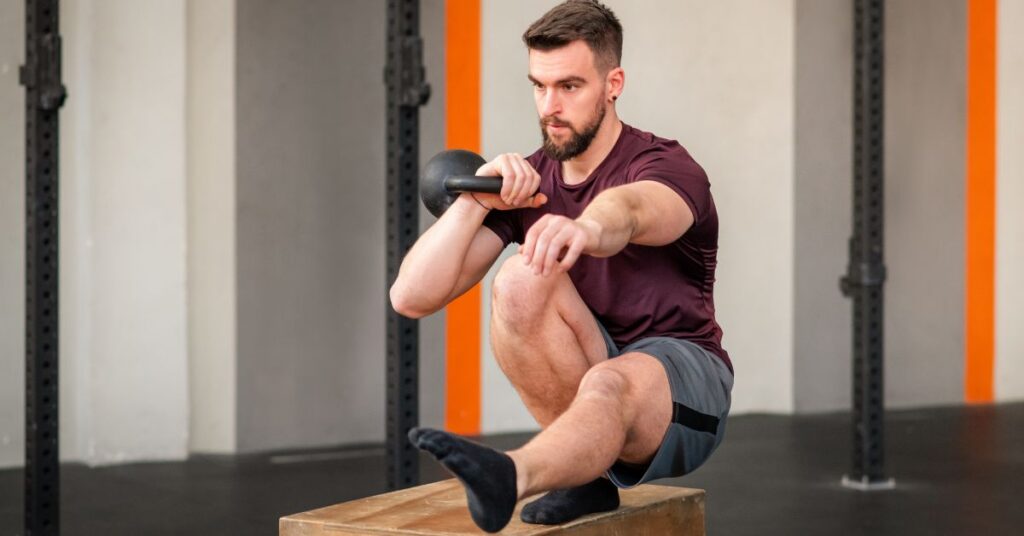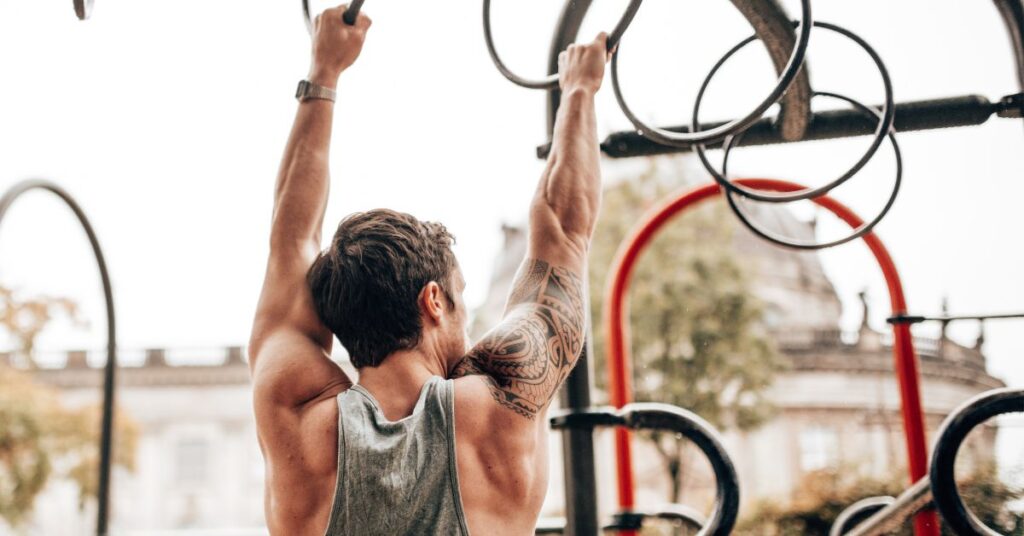Calisthenics exercises are bodyweight-based movements that develop strength, coordination, mobility, endurance, and balance without the need for machines or heavy weights. 20 Best Calisthenics Exercises for Beginners are: Pull-Ups for back, Push-Ups for chest, Squats for legs, Planks for core, Burpees for full body, Dips for triceps, Lunges for glutes, Leg Raises for abs, Mountain Climbers for cardio, Glute Bridges for hamstrings, Pike Push-Ups for shoulders, Wall Sits for quads, Jumping Jacks for cardio, Dead Hangs for grip, Calf Raises for calves, Side Planks for obliques, Superman for lower back, High Knees for coordination, Bear Crawls for mobility, and Hollow Body Hold for core strength.
In recent years, calisthenics exercises have experienced a remarkable resurgence in popularity, transforming from traditional military training methods to a mainstream fitness phenomenon. At the Indian School of Calisthenics (ISC), we’ve witnessed firsthand how these fundamental exercises for beginners can revolutionize fitness routines and deliver extraordinary results for practitioners of all levels. This comprehensive guide covers everything from basic movements to advanced progressions, helping you master the art of bodyweight training for optimal fitness results.
Table of Contents
What Are Calisthenics Exercises?
Calisthenics exercises represent a timeless approach to building real-world strength, control, and endurance using minimal equipment. These bodyweight movements form the foundation of functional fitness, offering a scalable and holistic training method that promotes both performance and aesthetics.
The term “calisthenics” comes from the Greek words kalos (beauty) and sthenos (strength), reflecting the balanced development these exercises provide. Popular movements include push-ups, pull-ups, squats, dips, planks, and leg raises, all of which can be performed virtually anywhere with just your body weight as resistance.
Learn exactly how many calories 500 skipping burns and how to make your jump sessions count.
History of Calisthenics
The term “calisthenics” comes from the Greek words kalos (beauty) and sthenos (strength). The method has ancient roots — Greek soldiers used bodyweight training to prepare for combat, and similar techniques have since been adopted by militaries and athletic programs worldwide.
Today, organizations like the Indian School of Calisthenics (ISC) are modernizing these timeless principles by integrating scientific programming and structured routines for learners of all levels.
20 Calisthenics Exercises for Beginners
Starting your calisthenics journey doesn’t require superhuman strength or gymnastic skills. These foundational exercises build essential movement patterns, develop core stability, and create the strength base needed for advanced progressions. Every expert began with these fundamentals—master them first, and the seemingly impossible becomes entirely achievable with consistent practice.
Calisthenics Exercises Overview Table
| Exercise | Primary Muscles | Difficulty | Equipment |
|---|---|---|---|
| Pull-Ups | Back, Biceps, Core | Intermediate | Pull-up Bar |
| Push-Ups | Chest, Shoulders, Triceps | Beginner | None |
| Squats | Legs, Glutes | Beginner | None |
| Planks | Core, Shoulders | Beginner | None |
| Burpees | Full Body | Intermediate | None |
| Dips | Triceps, Chest, Shoulders | Intermediate | Parallel Bars/Chair |
| Lunges | Legs, Glutes, Core | Beginner | None |
| Leg Raises | Lower Abs, Hip Flexors | Beginner | None |
| Mountain Climbers | Core, Shoulders, Legs | Beginner | None |
| Glute Bridges | Glutes, Hamstrings | Beginner | None |
| Pike Push-Ups | Shoulders, Triceps | Intermediate | None |
| Wall Sits | Quads, Glutes | Beginner | Wall |
| Jumping Jacks | Full Body, Cardio | Beginner | None |
| Dead Hangs | Grip, Forearms, Lats | Beginner | Pull-up Bar |
| Calf Raises | Calves | Beginner | None |
| Side Planks | Obliques, Core | Beginner | None |
| Superman | Lower Back, Glutes | Beginner | None |
| High Knees | Legs, Cardio, Core | Beginner | None |
| Bear Crawls | Full Body, Core | Intermediate | None |
| Hollow Body Hold | Core, Hip Flexors | Intermediate | None |
Find out is it better to do cardio before or after weights for your specific fitness goals.
1. Pull-Ups
The ultimate upper body exercise, pull-ups target your back, biceps, and core simultaneously. Hang from a bar with palms facing away, engage your shoulders, and pull your chin above the bar. Start with assisted variations using resistance bands or a partner. Build gradually—even one proper pull-up represents significant strength development.
2. Push-Ups
This fundamental movement builds chest, shoulders, and triceps while engaging your entire core. Start in a plank position, lower your body until your chest nearly touches the ground, then push back up. Modify by elevating your hands or dropping to your knees. Focus on maintaining a straight line from head to heels throughout.
3. Squats
Squats strengthen your entire lower body while improving mobility and functional movement patterns. Stand with feet shoulder-width apart, lower by pushing your hips back as if sitting in a chair, then drive through your heels to return to standing. Keep your chest up and knees tracking over your toes throughout the movement.
4. Planks
The plank is the cornerstone of core stability, engaging your abs, back, and shoulders isometrically. Hold a push-up position with forearms on the ground, maintaining a straight line from head to heels. Start with 30-second holds and gradually increase duration. Avoid letting your hips sag or pike up during the hold.
5. Burpees
This full-body explosive movement combines strength and cardiovascular conditioning. From standing, drop into a squat, place hands on the ground, jump feet back into a plank, perform a push-up, jump feet forward, then explode upward with arms overhead. Start slowly, focusing on form before increasing speed or adding variations.
6. Dips
Dips primarily target your triceps, chest, and front deltoids while requiring core stability. Use parallel bars, a sturdy chair, or bench. Lower your body by bending your elbows until shoulders are below elbows, then press back up. Keep your body upright and avoid flaring elbows excessively. Modify by bending knees or using assistance.
7. Lunges
Lunges develop unilateral leg strength, balance, and hip mobility while targeting quads, glutes, and hamstrings. Step forward into a deep lunge, lowering your back knee toward the ground while keeping your front knee over your ankle. Push off your front foot to return to starting position. Alternate legs or complete sets per side.
8. Leg Raises
This exercise targets your lower abdominals and hip flexors while building core strength. Lie on your back with legs straight, place hands under your lower back for support, then raise your legs until they’re perpendicular to the ground. Lower slowly with control. Bend knees to modify or add ankle weights for progression.
9. Mountain Climbers
A dynamic exercise combining cardio and core strength, mountain climbers simulate running in a plank position. Start in a plank, bring one knee toward your chest, then quickly switch legs in a running motion. Keep your core tight and hips level throughout. This exercise builds endurance while strengthening your entire core and shoulders.
10. Glute Bridges
Glute bridges activate and strengthen your posterior chain, particularly the glutes and hamstrings. Lie on your back with knees bent, feet flat on the ground. Squeeze your glutes and lift your hips toward the ceiling, creating a straight line from knees to shoulders. Hold briefly at the top before lowering. Essential for hip health and posture.
11. Pike Push-Ups
This variation targets your shoulders and prepares you for handstand progressions. Start in a downward dog position, walk your feet closer to your hands to create an inverted V-shape. Lower your head toward the ground by bending your elbows, then press back up. Keep your legs straight and focus on shoulder strength development.
12. Wall Sits
Wall sits build isometric strength in your quadriceps and glutes while improving mental toughness. Stand with your back against a wall, slide down until your thighs are parallel to the ground, as if sitting in an invisible chair. Hold this position while maintaining proper alignment. Start with 30-60 seconds and gradually increase duration.
13. Jumping Jacks
A classic cardiovascular exercise that also improves coordination and agility. Start with feet together and arms at your sides. Jump while spreading your legs shoulder-width apart and raising your arms overhead simultaneously. Jump again to return to starting position. This full-body movement elevates heart rate while engaging multiple muscle groups.
14. Dead Hangs
Dead hangs build grip strength and prepare your shoulders for pull-up progressions. Simply hang from a pull-up bar with arms fully extended, maintaining active shoulders (slightly engaged, not completely relaxed). Focus on building time under tension. This exercise strengthens your grip, forearms, and lats while improving shoulder stability and mobility.
15. Calf Raises
Calf raises strengthen your lower legs and improve ankle stability. Stand tall with feet hip-width apart, rise up onto your toes by lifting your heels as high as possible, then lower slowly with control. Perform on flat ground or on a step for increased range of motion. Essential for running, jumping, and overall lower leg development.
16. Side Planks
Side planks target your obliques and lateral core stability. Lie on your side, prop yourself up on your forearm with elbow directly under your shoulder, and lift your hips to create a straight line from head to feet. Hold this position while breathing normally. Strengthen both sides equally to prevent imbalances and improve functional core strength.
17. Superman
The superman exercise strengthens your lower back, glutes, and posterior chain. Lie face down with arms extended overhead. Simultaneously lift your chest, arms, and legs off the ground, creating an arch in your back. Hold for 2-3 seconds before lowering with control. This exercise counteracts forward posture and strengthens often-neglected back muscles.
18. High Knees
High knees combine cardiovascular conditioning with leg strength and coordination. Stand tall and run in place, bringing your knees up toward your chest as high as possible with each step. Pump your arms naturally and maintain an upright posture. This exercise elevates heart rate while improving running mechanics and hip flexor strength.
19. Bear Crawls
Bear crawls provide full-body strengthening while improving coordination and mobility. Start on hands and knees, tuck your toes under, and lift your knees slightly off the ground. Crawl forward by moving opposite hand and foot simultaneously, keeping your back flat and core engaged. This primal movement pattern builds functional strength throughout your entire body.
20. Hollow Body Hold
The hollow body hold is fundamental for developing core strength and body awareness needed for advanced calisthenics. Lie on your back, press your lower back into the ground, and lift your shoulders and legs off the ground simultaneously, creating a “hollow” or banana shape. Hold this position while breathing shallowly. Essential for gymnastic progressions and core stability.
10 Calisthenics Intermediate Exercises
Intermediate calisthenics builds upon foundational movements with increased complexity, unilateral training, and enhanced stability demands. These exercises challenge multiple muscle groups simultaneously while developing functional strength, balance, and coordination. Progress gradually to master proper form before advancing to the next level of difficulty.
| Exercise | Primary Muscles | Description | Progression Tips |
|---|---|---|---|
| Archer Push-Ups | Chest, Triceps, Shoulders | Single-arm emphasis push-up with wide hand placement | Start with elevated feet, progress to floor level |
| Single Leg Squats (Assisted) | Quadriceps, Glutes, Core | Squat on one leg using support for balance | Use TRX or hold onto stable surface initially |
| L-Sit Hold | Core, Hip Flexors, Shoulders | Seated position with legs extended, body lifted | Begin with knees bent, gradually straighten legs |
| Wall Handstand | Shoulders, Core, Arms | Inverted position against wall for support | Practice hollow body holds first, then kick up |
| Chin-Ups | Lats, Biceps, Rear Delts | Underhand grip pulling variation | Use resistance bands or jumping assistance if needed |
| Jump Squats | Legs, Glutes, Calves | Explosive squat with vertical jump component | Focus on soft landings, control descent |
| Diamond Push-Ups | Triceps, Chest, Shoulders | Narrow hand placement forming diamond shape | Elevate hands on platform if too challenging |
| Single Leg Glute Bridges | Glutes, Hamstrings, Core | Hip thrust performed on one leg | Master two-leg version first, maintain hip alignment |
| Decline Push-Ups | Upper Chest, Shoulders, Triceps | Push-ups with feet elevated on platform | Start with low elevation, gradually increase height |
| Russian Twists | Obliques, Core, Hip Flexors | Seated rotation holding legs off ground | Begin with feet down, progress to feet elevated |
10 Calisthenics Advanced Exercises
Advanced calisthenics represents the pinnacle of bodyweight training, requiring exceptional strength, balance, and neuromuscular control. These movements demand years of consistent practice and progressive overload. Master intermediate exercises completely before attempting these challenging skills that showcase true calisthenics mastery and athletic prowess.
| Exercise | Primary Muscles | Description | Progression Tips |
|---|---|---|---|
| Muscle-Ups | Lats, Chest, Triceps, Core | Explosive pull-up transitioning to dip | Master high pull-ups and ring/bar transitions first |
| Pistol Squats | Quadriceps, Glutes, Core | Full single-leg squat to ground | Use box squats, then progress depth gradually |
| Handstand Push-Ups | Shoulders, Triceps, Core | Push-ups performed in handstand position | Perfect freestanding handstand holds first |
| Human Flag | Core, Lats, Shoulders | Body horizontal, gripping vertical pole | Start with bent legs, progress to straight body |
| Planche Hold | Shoulders, Core, Wrists | Body parallel to ground, arms straight | Begin with feet elevated, lean forward progressively |
| One-Arm Push-Ups | Chest, Triceps, Core | Push-up performed with single arm | Practice archer push-ups, then assisted one-arm |
| Front Lever | Lats, Core, Shoulders | Body horizontal below bar, face up | Start with tucked knees, gradually extend legs |
| Back Lever | Shoulders, Core, Lats | Body horizontal below bar, face down | Master German hangs, then progress to full lever |
| Shrimp Squats | Quadriceps, Glutes, Balance | Single-leg squat with rear foot to glute | Develop ankle mobility and pistol squat strength |
| V-Sits | Core, Hip Flexors | Balanced position forming V-shape | Master L-sits first, then work on leg lifting |
These resistance band core exercises help you train deeper muscles for better performance and posture.

Why Calisthenics Is Gaining Popularity?
In an era dominated by expensive gym memberships and complex equipment, calisthenics offers a refreshing return to pure simplicity. This ancient form of bodyweight training is experiencing a remarkable renaissance, attracting fitness enthusiasts worldwide with its accessibility, effectiveness, and freedom from traditional constraints. Here’s why calisthenics is capturing hearts everywhere.
- Calisthenics has become one of the fastest-growing fitness trends, and for good reason:
- Minimal Equipment Required: Workouts can be done anywhere — home, park, or travel — with little more than a pull-up bar or floor space.
- Scalable for Every Fitness Level: Calisthenics is ideal for beginners and pros alike. From basic push-ups to advanced moves like muscle-ups and planches, you can adjust difficulty with progressions and regressions. Explore1 routines like the Calisthenics Core Workout and Calisthenics Pull Workout to challenge yourself effectively.
- Functional Strength Development: Rather than isolating muscles, calisthenics mimics real-world movement — improving coordination, balance, and control. This results in strength that translates beyond the gym.
- Community and Motivation: Calisthenics has a supportive, community-driven culture. Whether it’s online groups or local park workouts, sharing tips, videos, and progress boosts accountability.
- Visible, Sustainable Results: With consistency, calisthenics leads to increased strength, improved mobility, and a shredded, athletic physique — all while minimizing the risk of injury.
Try this resistance band bicep workout to build muscle and definition without heavy weights.
Who Should Do Calisthenics?
Calisthenics is for everyone. Calisthenics isn’t reserved for elite athletes or fitness fanatics. This versatile training method adapts to every fitness level, age, and lifestyle. Whether you’re a complete beginner, seasoned athlete, busy professional, or someone recovering from injury, bodyweight training offers scalable solutions that meet you exactly where you are. It’s particularly effective for:
Beginners
- Simple to start
- Low risk of injury
- Builds foundational strength and mobility
Fitness Enthusiasts
- Full-body workouts without machines
- Functional strength that supports sports or active lifestyles
- Perfect for home training
Special Populations
- Travelers and budget-conscious individuals appreciate its equipment-free nature
- Seniors benefit from joint-friendly, low-impact movement
- Rehabilitation patients can scale slowly and safely
These calisthenics back exercises are perfect for improving posture, strength, and control — no equipment needed.

Types of Calisthenics
Calisthenics encompasses far more than basic push-ups and pull-ups. This diverse training discipline branches into multiple specialized styles, each offering unique benefits and challenges. From explosive power movements to graceful flowing sequences, understanding these different approaches helps you choose the path that aligns with your goals and interests. Calisthenics includes a variety of styles, each tailored to different fitness goals and training preferences:
| Type | Focus | Difficulty | Key Exercises |
| Street Workout | Strength skills | Advanced | Muscle-ups, human flag |
| Gymnastics | Balance control | Advanced | Handstands, planche |
| Freestyle | Dynamic flow | Intermediate+ | Bar spins, kips |
| Power | Explosive strength | Intermediate+ | Clapping push-ups |
| Endurance | Cardio fitness | Beginner+ | Burpee circuits |
| Isometric | Static holds | Intermediate+ | Planks, hangs |
| Rehabilitative | Injury recovery | Beginner | Modified movements |
| Hybrid | Combined methods | All levels | Weighted calisthenics |
| Flow | Smooth transitions | Intermediate | Animal flows |
| Minimal | Basic movements | Beginner+ | Push-ups, squats |
Basic Calisthenics
- Focuses on classic moves like squats, push-ups, dips, and pull-ups
- Emphasizes correct form and progressive overload
- Great for strength, endurance, and general fitness
Street Workout
- Combines static and dynamic movements using bars and outdoor equipment
- Includes freestyle tricks and elements like muscle-ups and front levers
- Builds explosiveness, coordination, and control
Gymnastics-Based Calisthenics
- Includes planches, levers, and advanced handstand work
- Focuses on static holds, balance, and control
- Demands strict technique and advanced body awareness
Weighted Calisthenics
- Adds resistance (vests, belts, etc.) to bodyweight moves
- Ideal for advanced strength progression
- Bridges the gap between calisthenics and weight training
Movement Flow / Freestyle Calisthenics
- Integrates dance, parkour, or martial arts for fluid, creative sequences
- Improves flexibility, movement efficiency, and coordination
Want to enhance your upper-body and posterior chain strength? Check out Back Calisthenics Exercises for routines targeting lats, traps, and spinal support muscles using bodyweight alone.
Learn how to get a wider back with bodyweight exercises and smart training techniques that actually work.

Calisthenics Equipment
While calisthenics thrives on minimalism and bodyweight-only training, strategic equipment additions can expand your exercise repertoire and accelerate progress. From basic pull-up bars to resistance bands, these affordable tools enhance versatility without compromising the core philosophy of simple, accessible fitness. Less is more, but smart additions make a difference.
Essential Equipment:
- Pull-up Bar: The cornerstone for upper body pulling movements
- Parallel Bars/Dip Station: Enables various pushing movements and holds
- Resistance Bands: Provides assistance or added resistance
- Floor Space: Sufficient area for ground-based movements
Beneficial Additions:
- Gymnastics Rings: Versatile tool adding instability and range of motion
- Ab Wheel: Targets core through progressive rollout movements
- Jump Rope: Excellent for warm-ups and conditioning
- Suspension Trainer: Allows angle adjustments for difficulty progression
Advanced Equipment:
- Parallettes: Enables deeper range of motion for pushing movements
- Weighted Vest: Adds resistance to fundamental movements
- Climbing Rope: Develops grip strength and pulling power
- Plyo Box: Facilitates jumping variations and elevated movements
The beauty of this training methodology lies in its adaptability—practitioners can achieve impressive results with minimal equipment while having the option to expand their practice with specialized tools as they advance.
Learn how to do a perfect squat step-by-step and avoid common mistakes that hold you back.

Sample Beginner Workout Routine
This 4-day beginner-friendly workout routine helps build foundational strength, mobility, and endurance using bodyweight exercises only. Rest on Day 3 and Day 6, and use Day 7 for active recovery like stretching or walking.
Day 1: Bodyweight Basics
- 3 sets of 10 push-ups
- 3 sets of 15 squats
- 3 sets of 30-second planks
- 2 sets of 10 lunges per leg
- 2 sets of 10 leg raises
Day 2: Upper Body Focus
- 3 sets of incline push-ups
- 2 sets of negative pull-ups
- 3 sets of dips (assisted if needed)
- 3 sets of wall handstands
Day 4: Lower Body Focus
- 4 sets of 20 squats
- 3 sets of 12 lunges per leg
- 3 sets of glute bridges
- 2 sets of calf raises
Day 5: Full-Body Workout
- Circuit training combining all basic movements
- Focus on form and controlled movement
- Include active recovery between sets
Try this all-in-one full body calisthenics workout to hit every muscle group using just your bodyweight.

Calisthenics Exercises vs Weight Training Comparison
The fitness world often divides into two camps: calisthenics enthusiasts and weight training advocates. Both approaches build strength and muscle, but through vastly different methods. Understanding their unique advantages, limitations, and applications helps you make informed decisions about which path aligns best with your goals, lifestyle, and preferences.
| Aspect | Calisthenics | Weight Training |
| Equipment Needed | Minimal (pull-up bar, floor space) | Extensive (weights, machines, gym) |
| Cost | Very low (one-time equipment purchase) | High (gym memberships, equipment) |
| Accessibility | Train anywhere, anytime | Requires gym access or home setup |
| Learning Curve | Moderate (focus on body mechanics) | Easier to start, complex to master |
| Muscle Building | Excellent for lean muscle, slower bulk | Superior for rapid mass gain |
| Functional Strength | High (movement-based patterns) | Moderate (isolated movements) |
| Cardiovascular Benefits | High (compound, flowing movements) | Low to moderate (depends on style) |
| Flexibility/Mobility | Excellent (full range of motion) | Limited (unless specifically trained) |
| Progression Method | Leverage, reps, advanced variations | Adding weight, reps, sets |
| Injury Risk | Lower (natural movement patterns) | Higher (external loads, poor form) |
| Time Efficiency | High (compound movements) | Moderate (isolation requires more time) |
| Scalability | Excellent (beginners to advanced) | Excellent (wide weight ranges) |
| Social Aspect | Growing community, outdoor groups | Strong gym culture, spotting partners |
| Portability | Perfect for travel | Limited to gym locations |
| Body Composition | Lean, athletic physique | Variable (bulk to lean possible) |
Find out the truth behind does jumping jacks reduce belly fat and how to use them effectively for fat loss.
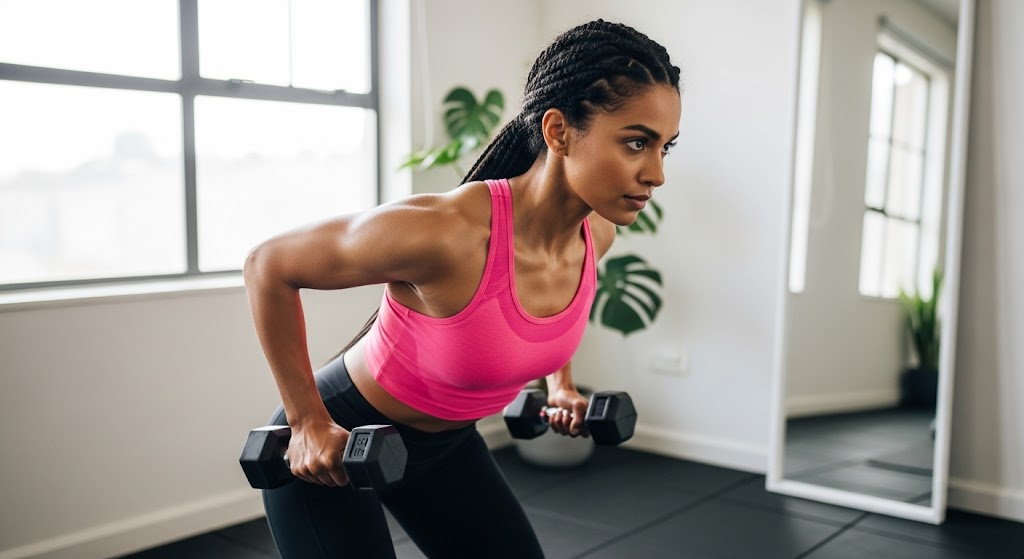
Calisthenics Exercises Benefits
Calisthenics delivers remarkable benefits that extend far beyond simple muscle building. This bodyweight training method enhances functional strength, improves mobility, boosts cardiovascular health, and develops mind-body coordination. From physical transformation to mental resilience, these compound movements create holistic fitness improvements that translate directly into real-world performance and everyday vitality.
Physical Benefits
- Improved strength-to-weight ratio
Calisthenics exercises, especially bodyweight movements, help improve your strength-to-weight ratio by focusing on lifting your own body weight. Best calisthenics exercises like push-ups, pull-ups, and dips are perfect for gradually building this strength, making them effective for all fitness levels. - Enhanced flexibility
Engaging in exercises for beginners not only boosts strength but also enhances flexibility. Movements like lunges and bridges are excellent for stretching and promoting joint health, leading to better body mechanics. - Better coordination
Calisthenics exercises require the entire body to work in harmony, improving coordination over time. All exercises, whether beginner or advanced, help you develop better motor skills by challenging your balance and stability. - Increased joint mobility
The natural movements in calisthenics exercises help increase joint mobility, making daily activities easier. Regular practice of advanced calisthenics exercises like pistol squats or handstands also improves joint stability and strength. - Improved posture
By targeting the core and back muscles, calisthenics exercises naturally improve your posture. Performing these movements regularly strengthens postural muscles, aligning the body and reducing slouching tendencies.
Practical Benefits
- No gym membership required
One of the key calisthenics exercise benefits is that they can be done without needing a gym membership. All you need is space and motivation to get started, making it an affordable and accessible workout routine. - Minimal equipment needs
With calisthenics exercises, minimal equipment is required. Often, only a pull-up bar or parallel bars are necessary for more advanced movements, but it can be done with bodyweight alone. - Can be performed anywhere
Since all calisthenics exercises utilize body weight, they can be performed anywhere—at home, in a park, or even on vacation. This convenience makes it a flexible option for staying fit without time or location restrictions. - Scalable difficulty
Calisthenics routines are easily adjustable to any fitness level. Beginners can start with basic movements, while more experienced practitioners can add difficulty by advancing to more challenging exercises like muscle-ups or handstands. - Low risk of injury when properly executed
When done correctly, calisthenics exercises have a low risk of injury due to their reliance on natural body movements. Proper form in even the best exercises reduces stress on joints and ligaments, promoting long-term fitness without frequent injuries.
Try these effective unilateral exercises to build balanced strength and improve overall performance.
Mental Benefits
- Builds discipline
Regular practice of calisthenics exercises builds discipline, as consistency is key to seeing results. Setting goals for mastering different movements helps maintain motivation and self-discipline. - Enhances body awareness
Calisthenics exercises enhance body awareness by teaching you to control your movements precisely. As you progress from basic to advanced calisthenics exercises, you develop a stronger connection between your mind and body. - Develops mental resilience
The challenge of performing all calisthenics exercises, especially more complex movements, helps build mental toughness. Overcoming the difficulties of learning and mastering fosters resilience. - Boosts confidence
Successfully mastering exercises like pull-ups, push-ups, or handstands increases confidence. Each new skill or strength milestone reached through calisthenics exercise benefits provides a sense of accomplishment, further boosting self-esteem. - Creates sustainable habits
These exercises also encourage the development of sustainable fitness habits due to their simplicity and adaptability. Incorporating movements from the calisthenics exercises list into daily routines makes maintaining a long-term fitness regimen easier and more enjoyable.
Understand the key differences in unilateral vs bilateral training and how to use both for optimal results.
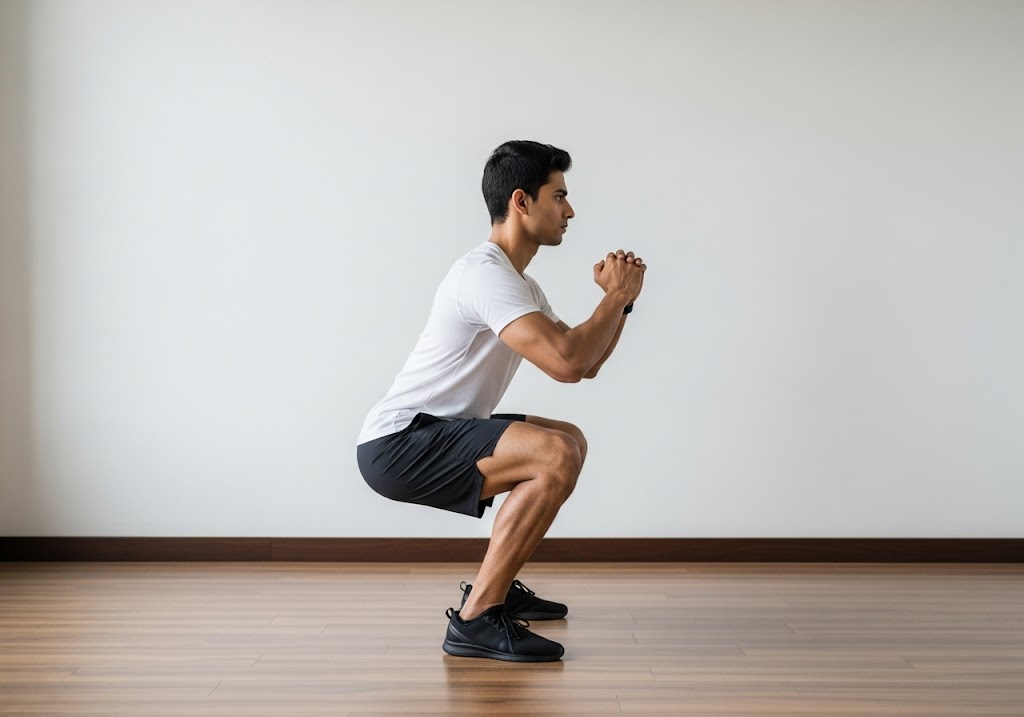
Basic Calisthenics Exercises Equipment
While calisthenics thrives on minimalism and bodyweight-only training, strategic equipment additions can expand your exercise repertoire and accelerate progress. From basic pull-up bars to resistance bands, these affordable tools enhance versatility without compromising the core philosophy of simple, accessible fitness. Less is more, but smart additions make a difference.
| Equipment | Primary Use | Necessity Level | Key Benefits | Best For |
| Pull-up Bar | Upper body pulling exercises | Essential | Back, biceps, grip strength | All levels |
| Parallel Bars/Dip Station | Dips, L-sits, handstand practice | High | Triceps, chest, core stability | Intermediate+ |
| Resistance Bands | Assistance and added resistance | High | Progression aid, muscle activation | All levels |
| Gymnastic Rings | Advanced upper body training | Medium | Instability, full-body strength | Intermediate+ |
| Ab Wheel | Core strengthening | Medium | Intense abdominal training | Intermediate+ |
| Suspension Trainer | Full-body bodyweight training | Medium | Versatile angles, portability | All levels |
| Yoga Mat | Floor exercises, stretching | Low | Comfort, grip, joint protection | All levels |
| Plyo Box | Jump training, step-ups | Low | Explosive power, leg strength | Intermediate+ |
| Weighted Vest | Added resistance | Low | Progressive overload | Advanced |
| Parallettes | Handstand practice, wrist relief | Low | Hand positioning, advanced moves | Intermediate+ |
| Foam Roller | Recovery and mobility | Low | Muscle recovery, flexibility | All levels |
| Ankle Weights | Leg exercises, added difficulty | Optional | Lower body resistance | All levels |
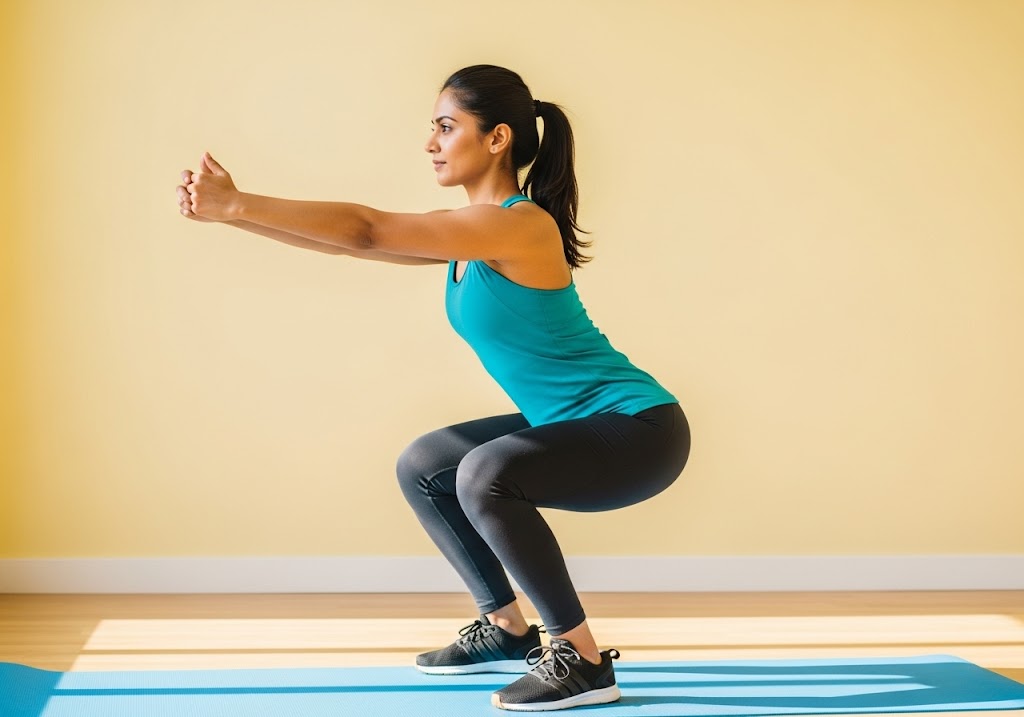
Common Calisthenics Myths Debunked
Despite calisthenics’ proven effectiveness, persistent myths continue to discourage potential practitioners. From beliefs about limited muscle growth to misconceptions about difficulty levels, these unfounded claims prevent people from experiencing bodyweight training’s true potential. Let’s separate fact from fiction and address the most common misconceptions that hold people back from this transformative discipline.
“Calisthenics is Only for Beginners”
While calisthenics exercises are ideal for beginners, they also provide a challenging workout for advanced athletes. The best exercises include complex movements like planches and muscle-ups that require exceptional strength and control. At ISC, advanced practitioners showcase how these exercises can push the limits of what the body can achieve.
“You Need Weights to Build Muscle”
A common misconception is that weights are essential for muscle growth, but calisthenics exercises leverage your body weight to create resistance. Through progressive overload and such as one-arm push-ups and pistol squats, significant muscle growth can be achieved without weights. ISC trainers focus on tailoring these exercises for effective muscle building.
“Calisthenics Doesn’t Help with Cardio Fitness”
Contrary to popular belief, dynamic calisthenics exercises like burpees and jumping lunges offer excellent cardiovascular benefits. When properly programmed, these exercises can increase heart rate, improve stamina, and provide a full-body cardio workout. Incorporating these into your routine is a great way to combine strength with calisthenics exercise benefits for cardio health.
Learn how to train and perfect your calisthenics handstand – whether you’re a beginner or levelling up.
Conclusion
Calisthenics exercises offer a sustainable, adaptable, and effective approach to fitness that can evolve with your abilities and goals. The Indian School of Calisthenics (ISC) continues to witness transformative results across all age groups and fitness levels. They have been dedicated to offer the best calisthenics exercises for beginners to ensure overall muscle and strength training of the individuals.
Whether you’re building a solid core foundation or chasing advanced skills like dragon flags and L-sit holds, your calisthenics core workout is the backbone of full-body strength and control. Level up your training at ISC – Indian School of Calisthenics, Mumbai’s premier hub for bodyweight mastery. Train smarter at ISC – Indian School of Calisthenics, Mumbai’s leading destination for skill-based bodyweight training. Visit us at SRPF Ground, NH8, Goregaon (E), Mumbai – 400065. For class schedules, personalized coaching, or more details, call +91 77159 53218. Train smart, move better, and unlock your back strength with ISC.
Calisthenics Exercises – FAQs
How long does it take to see results with calisthenics exercises?
With consistent practice of calisthenics exercises, beginners typically notice improvements in strength and endurance within 4-6 weeks. Moreover, as you engage with calisthenics exercises regularly, visible physical changes usually appear within 8-12 weeks.
Can I build muscle with calisthenics exercises alone?
Yes, calisthenics exercises can effectively build muscle through progressive overload and proper nutrition. Many advanced practitioners have achieved impressive physiques using bodyweight training exclusively, highlighting the effectiveness of the best calisthenics exercises.
How many times per week should I train calisthenics?
For beginners, 3-4 sessions per week focusing on various calisthenics exercises from a comprehensive calisthenics exercises list, with rest days in between, is optimal. Advanced practitioners may train 5-6 times per week while incorporating advanced calisthenics exercises and ensuring proper recovery protocols.
What’s the best age to start calisthenics?
Calisthenics can be started at any age, with proper modifications for individual fitness levels. The Indian School of Calisthenics (ISC) has successfully trained students from ages 15 to 65, showcasing the accessibility of all calisthenics exercises.
Do I need any equipment to start calisthenics?
While basic calisthenics exercises can be performed with no equipment, having access to a pull-up bar and parallel bars can expand your exercise options significantly. This flexibility allows for a wider range of calisthenics exercise benefits, making workouts more effective and enjoyable.
What are some effective examples of HIIT workouts that can be easily incorporated into a weekly fitness routine?
Effective examples of HIIT workouts include bodyweight HIIT workout like burpees and jumping jacks, Tabata sprints, circuit training with battle ropes and kettlebell swings, running intervals of sprinting and jogging, and jump rope variations, all structured to alternate between high intensity and short rest periods.
How long does it take to see results with calisthenics exercises?
Most people notice strength and endurance improvements within 4–6 weeks with consistent training and proper nutrition.
Can I build muscle with calisthenics exercises alone?
Yes, calisthenics can build lean muscle mass effectively, especially when using progressive overload and advanced bodyweight movements.
How many times per week should I train calisthenics?
Training 3–5 times per week is ideal, depending on your fitness level and recovery. Include rest days for optimal progress.
What’s the best age to start calisthenics?
Calisthenics is safe for most age groups. Kids, teens, adults, and seniors can all start with age-appropriate routines.

